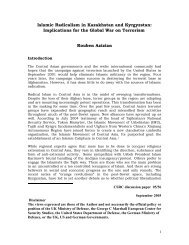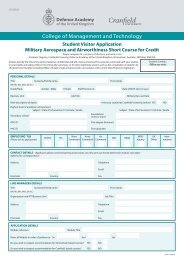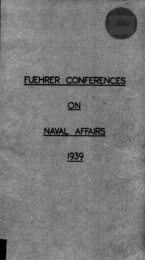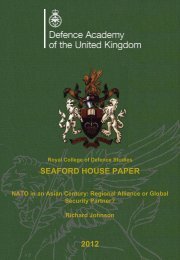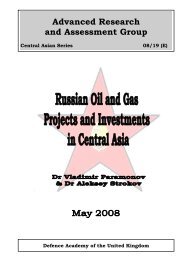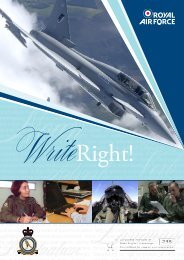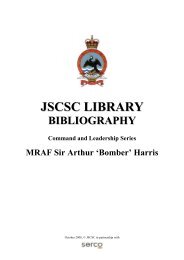Chapter 1
Chapter 1
Chapter 1
- No tags were found...
You also want an ePaper? Increase the reach of your titles
YUMPU automatically turns print PDFs into web optimized ePapers that Google loves.
1Maritime Doctrinein ContextIn the Royal Navy, the existence of formal doctrine can be traced back tothe original edition of The Fighting Instructions, issued to the Fleet in1672, and to a code of tactical signals promulgated during theCommonwealth in 1653. The development of maritime tactical doctrine isthus a well-established process going back over 300 years. The RoyalNavy’s current operational and tactical doctrine is still promulgated in TheFighting Instructions and a wide range of supporting publications. Theseare also subjected to regular review as technology and equipment isdeveloped and enters into service and as a consequence of bothoperational experience and the analysis of operational and exerciseperformance. By its nature, much of this doctrine is specialised, isessentially the domain of those involved in operational and tacticaldecision-making and is not very widely disseminated. Indeed, manyaspects of operational and tactical doctrine are sensitive and are covered byappropriate security classifications.However, once we move up the hierarchy, from the tactical and operationallevels to the military- and grand-strategic levels, doctrine becomes less theexclusive business of the deep military specialists and more the legitimateinterest of any with a professional, academic, political or social stake in theuse of military power. There is also an especial need to recognise that, forreasons of motivation, morale, commitment and professional operationalunderstanding, junior military ranks need to have access to an1



